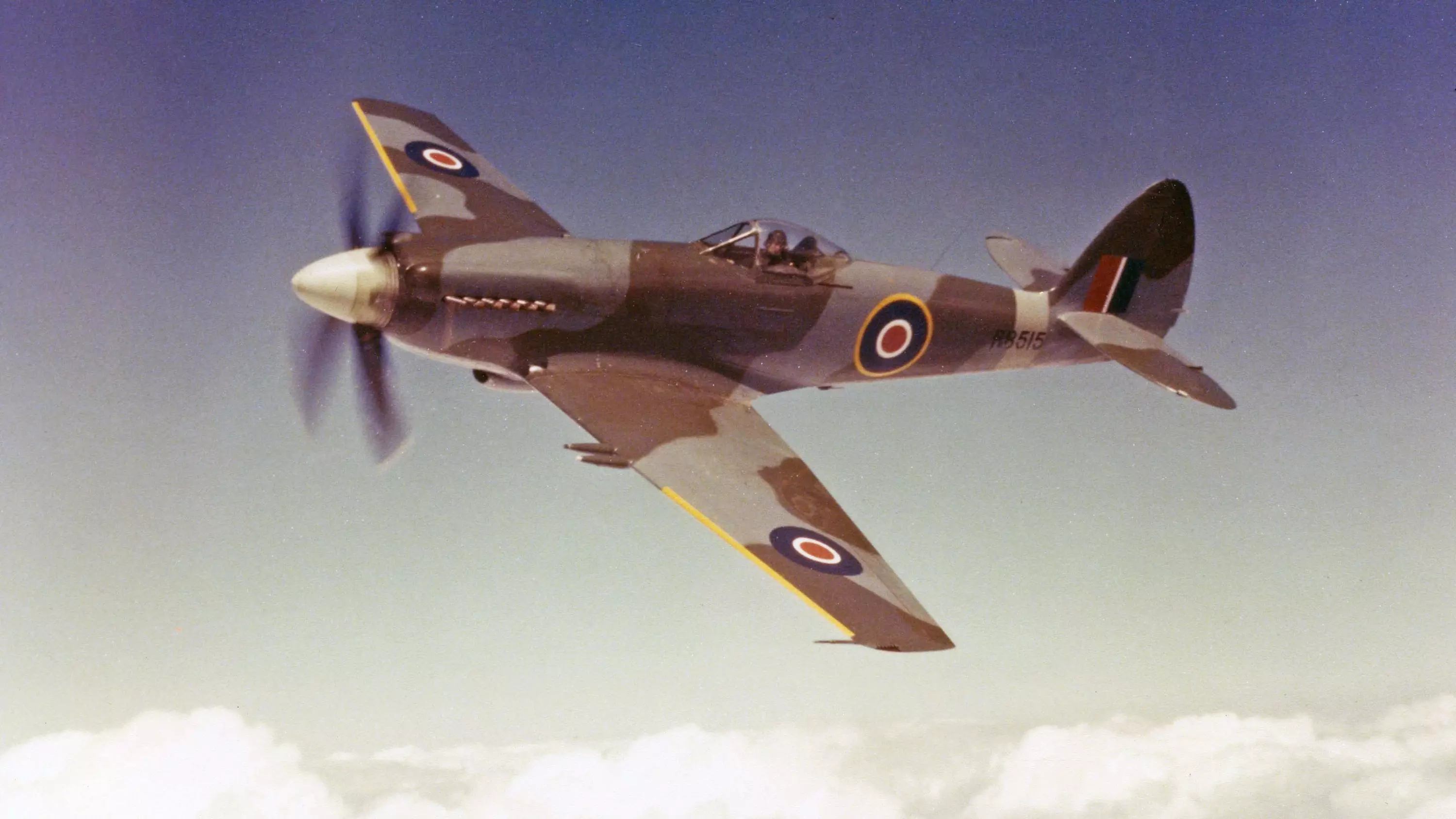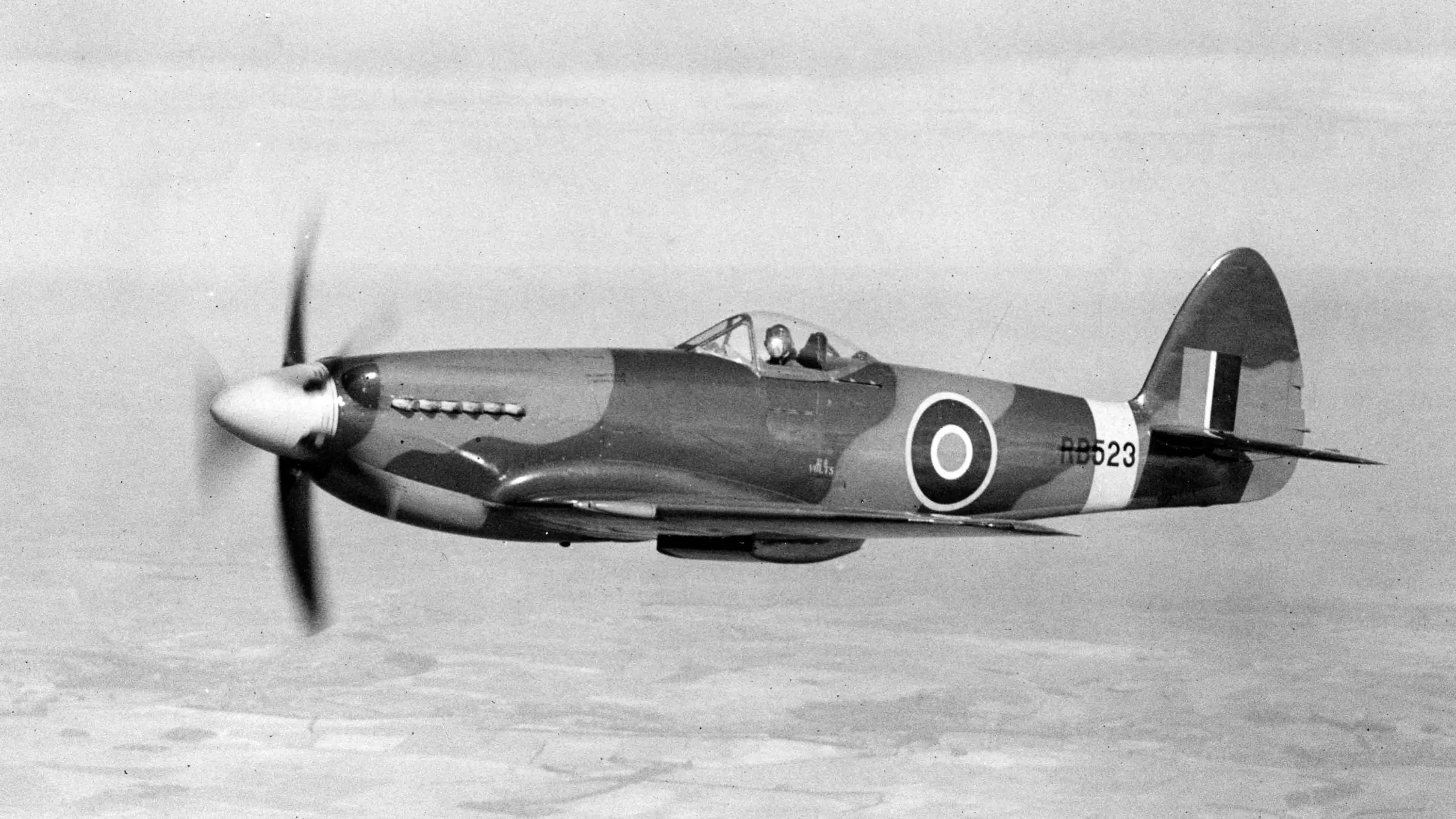- Yes
- No
Introduction
The Supermarine Spiteful was a further development of the Supermarine Spitfire. Designed to give the plane improved manouverability at higher speeds, and also make it significantly faster. While it never entered active service with the RAF, it did enter serial production and went on to be used as a testbed for early jet technologies. The aircraft is one of the very last piston fighters ever designed.

History
Spoiler
Work on the Supermarine Spiteful began internally in Supermarine on 30 November 1942 with specification 470, this called for a spitfire with a laminar flow wing that would increase top speed and high speed manouverability.
The air ministry showed interest in the concept and issued specification F.1/43 in Feburary 1943 to further develop the concept.
The first prototype (NN660) was a Spitfire mk XIV fitted with the new wing, this prototype flew 30th June 1944 and later crashed.
During development it was discovered that that airframe suffered from instability and therefore needed larger fins, rudders and tailplane. This “Spiteful type tailplane” would go on to be used on the Spitfire mk22 and mk24.
The air ministry ordered 150 aircraft, and the first production Spiteful (RB515) flew in April 1945. But with the success of jet aircraft the order was eventually limited to just 2 more flying prototypes and 17 production aircraft.
Although the type never entered operational service with the RAF it was used as a testbed for development of early jet technologies. In the end it was determined that the new type of wing would be suitable for a new jet aircraft, later named ‘Supermarine Attacker’
Images
Spoiler

Spiteful F.XIV RB515 photographed by Charles E. Brown 27 july 1945

Spiteful F.XIV RB523 photographed in April 1946

Patrick Shea-Simonds at the controls of Spiteful RB515

Jeffrey Quill waits to take off in Spiteful RB522 at the display held at Farnborough between 27 and 30 June 1946
Specifications/armament
Spoiler
General characteristics
- Crew: 1
- Length: 32ft 11in (10.03m)
- Wingspan: 35ft (11m)
- Height: 13ft 5in (4.09m)
- Wing area: 210sq ft (20m^2)
- Airfoil: Root: Supermarine 371-I; tip: Supermarine 371-II
- Gross weight: 9,950lb (4,513kg)
- Powerplant: 1 × Rolls-Royce Griffon 69, 2,375hp (1,771kW)
- Propellers: 5-bladed constant-speed propeller
Performance
- Maximum speed: 483 mph (777 km/h, 420 kn) at 21,000 ft (6,400 m)
- Cruise speed: 240 mph (390 km/h, 210 kn) at 255 mph (222 kn; 410 km/h)
- Range: 564 mi (908 km, 490 nmi)
- Service ceiling: 42,000 ft (13,000 m)
- Rate of climb: 4,890 ft/min (24.8 m/s) at 2,000 ft (610 m)
Armament
- Guns: 4 × 20 mm Hispano Mk.V cannon with 156 rpg
-
- Rockets: 8–12 × 3 in (76 mm) 60 lb RP-3 or 4 × 300 lb (140 kg) rockets
- Bombs: 2 × 1,000 lb (450 kg) bombs
Sources
Spoiler
- https://www.baesystems.com/en/baesystems-com/en/heritage/vickers-supermarine-spiteful
- Supermarine Spiteful and Seafang examined in depth
- Rickard, J (28 April 2017), Supermarine Spiteful , Supermarine Spiteful
- Supermarine Spiteful | Classic Warbirds
- Supermarine Spiteful - Wikipedia
Engine: